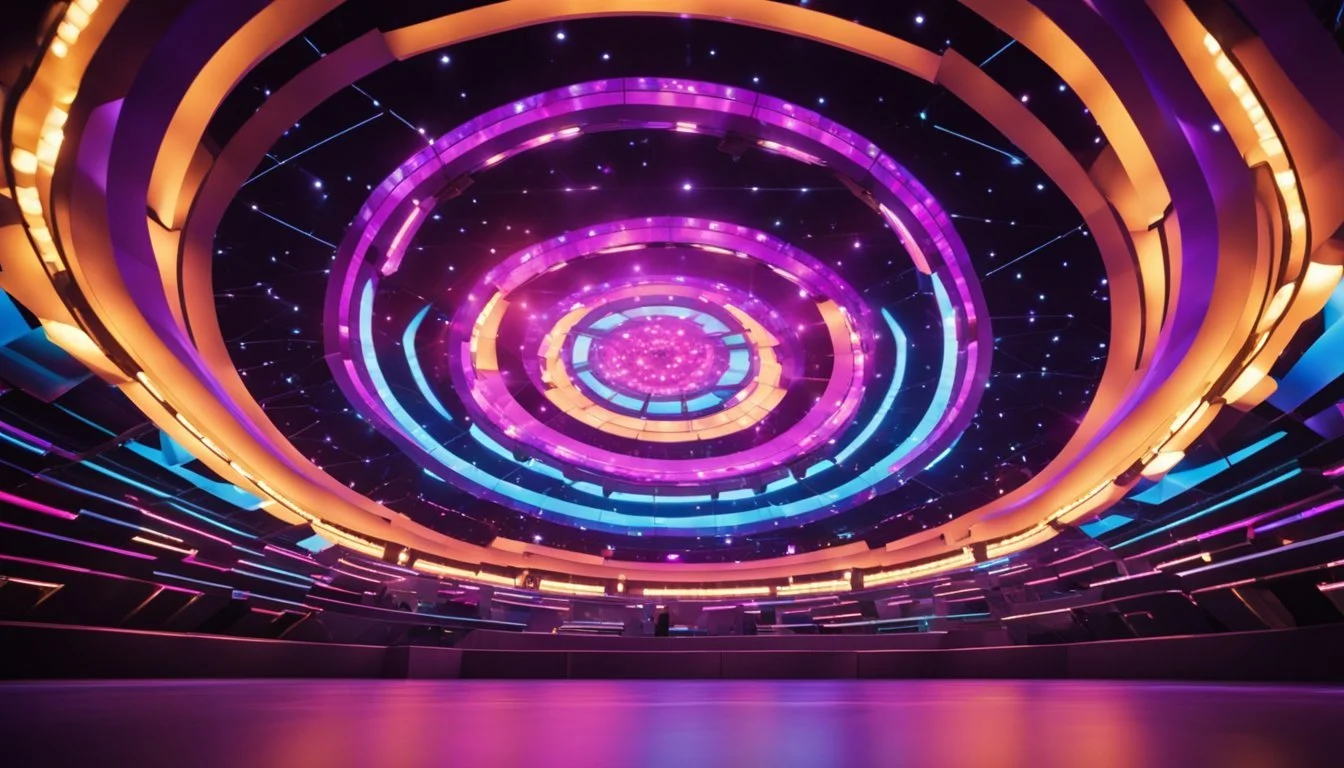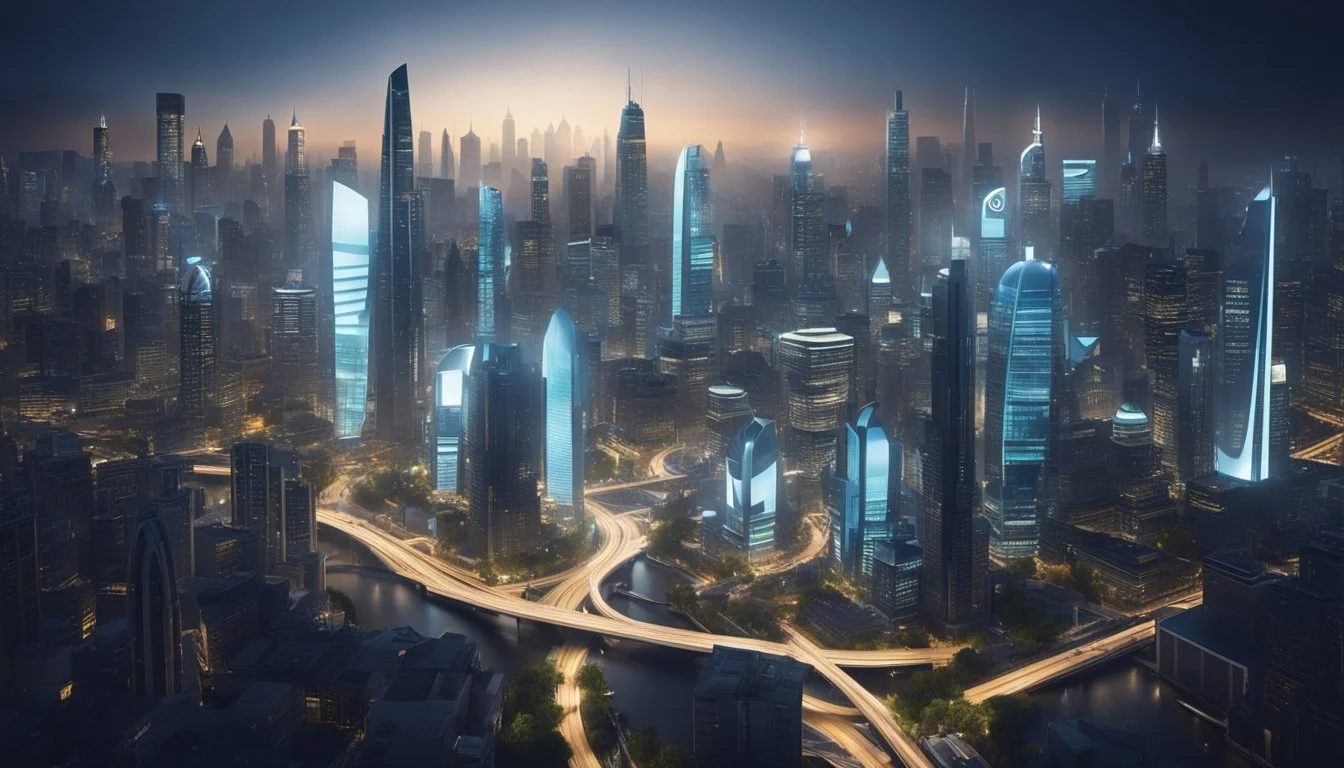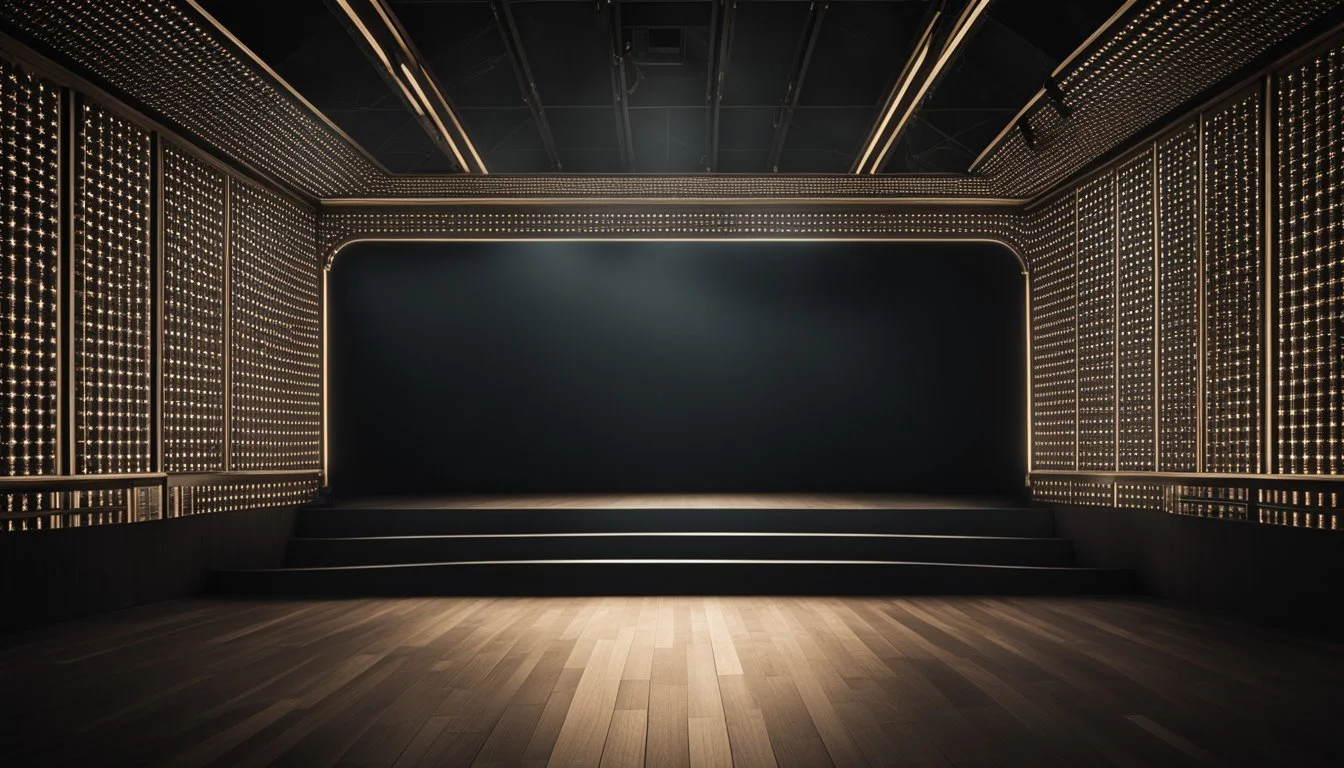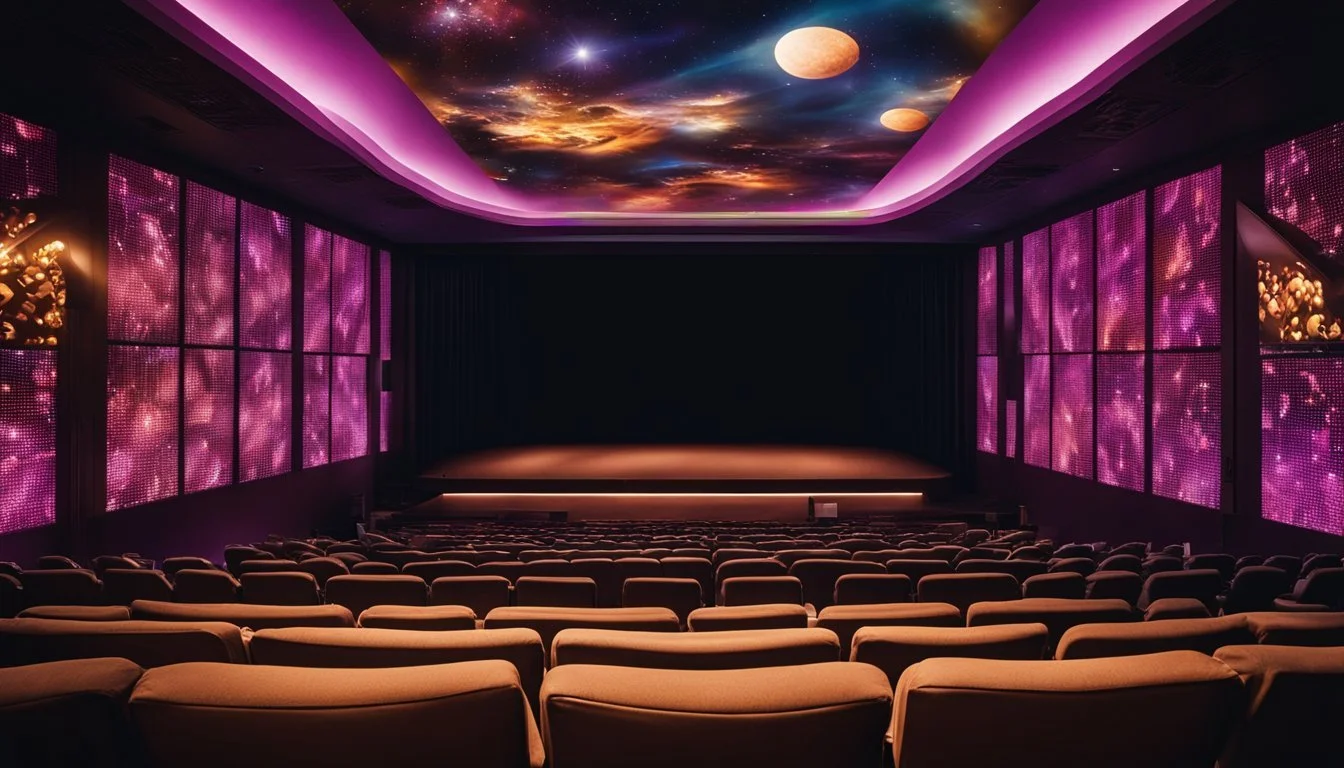6 Innovative Ways to Use Projection Mapping in Your Films
Enhance Visual Storytelling
Projection mapping has rapidly emerged as a groundbreaking tool in the world of filmmaking. By projecting images onto various surfaces, filmmakers can create stunning visual effects that enhance storytelling and captivate audiences. This technique transforms ordinary settings into dynamic scenes, providing endless possibilities for creativity.
Filmmakers continually seek innovative methods to make their films stand out. Projection mapping offers a fresh approach that not only augments visual appeal but also immerses viewers in the narrative. By leveraging this technology, filmmakers can push the boundaries of traditional cinematography and craft unforgettable cinematic experiences.
1) Create Dynamic Title Sequences
Projection mapping adds a unique flair to film title sequences. It allows filmmakers to project intricate designs and animations onto various surfaces, adding depth and movement to text.
Shifting designs and vibrant colors can create eye-catching title transitions.
Filmmakers can scale the complexity of the title sequence based on the narrative of the film, making each sequence distinct.
By using projection mapping, creators can synchronize the animation with music or sound effects for a more engaging introduction. This technique ensures that the titles not only provide necessary information but also enhance the visual storytelling of the film.
2) Transform Locations with Virtual Sets
Projection mapping can significantly alter filming locations by creating virtual sets. Filmmakers can project digital backgrounds and settings onto physical surfaces, making ordinary spaces appear extraordinary.
This method allows for real-time changes and adjustments, providing a versatile tool for directors and cinematographers. It’s a cost-effective way to craft complex environments without the need for extensive physical sets.
By integrating 3D and holographic projections, creators can provide depth and immersion, enhancing the visual storytelling. Virtual sets can also interact with live performances, creating dynamic and engaging scenes.
Environmental mapping further aids in seamlessly blending the projected images with the actual surroundings, ensuring a cohesive look. This technology benefits both large-scale productions and indie films, offering creative freedom and flexibility.
3) Enhance Live Performances with Interactive Visuals
Integrating projection mapping into live performances brings a new level of interactivity to the show. Artists can synchronize visuals with their music, creating a cohesive and immersive experience.
Interactive visuals can react in real-time to a performer's movements. This makes the performance more dynamic and engaging for the audience.
Projection mapping can also transform ordinary stage objects into mesmerizing displays. This adds an extra layer of creativity and visual storytelling to the performance.
By using interactive visuals, performers can create a unique atmosphere that stands out. It makes the event more memorable and enjoyable for attendees.
4) Add Depth to Animations and Visual Effects
Projection mapping can significantly enhance the depth and realism of animations and visual effects. By projecting animations onto varied surfaces, filmmakers can create stunning visual effects that appear to interact with the real world.
Using advanced software, animators can craft intricate visuals, such as optical illusions and 3D extrusions. These techniques make animations feel more integrated with their surroundings, resulting in a more immersive viewing experience.
For instance, motion capture technology can be combined with projection mapping to translate real-world movements into animated characters that appear to move seamlessly within a physical space. This adds a tactile quality to otherwise flat animations.
Another approach involves using projection mapping on architectural structures. This method transforms buildings into dynamic canvases, allowing animations to play out on complex surfaces, thus adding a unique layer of depth to visual storytelling.
Employing photorealistic rendering techniques can also make the projected visuals remarkably lifelike, further enhancing the viewer's sense of immersion. This technique leverages high-quality video textures and precise lighting to create an almost tangible experience.
5) Integrate Real-time Data into Scenic Designs
Incorporating real-time data into scenic designs can elevate the visual storytelling in films. This approach allows for dynamic adjustments that respond to live inputs, enriching the scene's authenticity.
Using sensors and data feeds, filmmakers can project real-time weather changes onto sets, making the environment feel alive. Visuals can shift dynamically, matching the narrative's demands.
Performance-related data, like actors' movement or voice levels, can also drive projection mapping. This creates an interactive backdrop that responds to on-screen action, enhancing the viewer's immersion.
Combining real-time data with 360° projection mapping extends this capability further. It allows for immersive environments where every angle adapts to the developing storyline.
This practice is not just limited to visual effects. Real-time data can synchronize lighting, sound, and even haptic feedback, providing a multisensory experience. These elements, when harmonized, contribute to a more compelling and believable world within the film.
6) Elevate Music Videos with Immersive Projections
Projection mapping can transform music videos into visually striking masterpieces. By using this technology, filmmakers can project intricate designs, patterns, and animations onto various surfaces, creating a dynamic visual experience.
Filmmakers can synchronize projections with music to enhance the song’s rhythm and mood. This adds an extra layer of depth and engagement for viewers.
Immersive projections can also be used to create surreal or fantastical scenes. Artists can perform in a variety of imaginative settings without needing to travel to different locations or build elaborate sets.
Projection mapping is versatile, allowing it to adapt to different musical genres and artistic styles. From electronic music to classical, the technology can tailor the visual experience to complement the audio.
This technique enhances storytelling in music videos. It provides a new way to visualize abstract concepts or emotions conveyed by the song’s lyrics, making the narrative more compelling.
The Future of Visual Storytelling
Projection mapping is poised to transform visual storytelling by enhancing viewer immersion and blending seamlessly with traditional cinematic techniques.
Enhancing Immersion with Projection Mapping
Projection mapping can significantly elevate the audience’s experience by transforming ordinary environments into dynamic, immersive worlds. By projecting tailored visuals onto three-dimensional surfaces, filmmakers can create scenes that seem to come alive, enveloping viewers in the story.
Imagine a sci-fi film where the spaceship’s control room is projected directly onto the set, making the actors interact with realistic holograms. Interactive elements like dynamic landscapes or animated characters can respond to actors' movements, creating a more engaging and believable environment.
The integration of augmented reality (AR) with projection mapping also allows for customizable narrative experiences. Viewers could see different story elements based on their perspective or proximity to the projection, adding layers to the storytelling process.
Seamless Integration with Cinematic Techniques
Incorporating projection mapping with traditional film techniques can make visual effects more organic and integrated. Directors can utilize projection mapping to extend physical sets or enhance practical effects, thus reducing reliance on expensive CGI and green screens.
For instance, a chase sequence could be made more thrilling by projecting moving backgrounds onto physical sets, creating the illusion of a fast-paced environment without requiring extensive post-production.
Projection mapping also aids in better previsualization of complex scenes. Directors and cinematographers can see a near-final version of visual effects on-location, allowing for real-time adjustments and better planning of shots.
The use of projection mapping can also streamline lighting effects, making them more realistic and dynamic. By aligning projected light and shadow with the film's natural lighting, scenes achieve a cohesive visual harmony.
Technical Aspects and Considerations
To leverage projection mapping in films effectively, understanding the equipment and software requirements is crucial. Filmmakers must also address the technical challenges that accompany this advanced technology.
Equipment and Software Requirements
Projection mapping involves several critical pieces of equipment and software. Projectors are central, with specifications like brightness (measured in lumens) and resolution being key considerations. A high lumen count ensures visibility even in well-lit environments.
Computers equipped with robust graphics cards are essential. These computers run specialized software such as MadMapper, Resolume, or TouchDesigner. These programs facilitate the mapping process, allowing precise control over projected images.
The choice of projection surfaces impacts the visual outcome. Surfaces could be building exteriors, irregularly shaped objects, or sets, requiring careful calibration for seamless displays. 3D modeling software like Blender or Cinema 4D is also beneficial, helping in creating custom visuals that align with the film's theme.
Overcoming Challenges in Projection Mapping
Projection mapping in film production presents unique challenges. Environmental factors like ambient light and weather conditions can affect projection visibility. Implementing higher lumen projectors or additional shading can mitigate these issues.
Surface irregularities may distort the projected images. Precision in the initial mapping process and adaptive software algorithms help overcome this. Using multiple projectors can ensure coverage and image blending for larger or uneven surfaces.
Synchronization of visual elements with filmmaking schedules is crucial. Shot planning must account for projection setup and testing time. Proper coordination ensures that projections align perfectly within scenes, maintaining visual continuity and artistic integrity.
Proper maintenance of equipment is also vital. Regular checks for projector alignment and software updates can prevent technical disruptions during filming.
Case Studies of Successful Implementation
Projection mapping has been effectively utilized in various films, often transforming mundane scenes into extraordinary visual experiences. Analyzing these case studies can provide valuable insights into its application.
Iconic Films Utilizing Projection Mapping
"Blade Runner 2049" employed projection mapping to create its futuristic cityscapes. Projectors were used to cast images onto vast sets, blending digital visuals with physical structures. This not only enhanced the film's atmosphere but also allowed for real-time changes during production.
In "Inception", projection mapping played a crucial role in the bending city scene. Instead of relying solely on CGI, projectors mapped detailed textures onto models, resulting in more convincing effects. These methods enabled more dynamic and surreal visual storytelling.
"Ghost in the Shell" also leveraged this technology, using projections to render complex holographic advertisements within the urban environment. This technique added depth and realism, immersing the audience in the film’s high-tech world.
Learning from Industry Leaders
Chicago Projection Mapping showcased their expertise through various projects. By detailing their process from concept to completion, they highlight critical techniques such as precise alignment, choice of surfaces, and integration with physical scenery. Their case studies often feature behind-the-scenes footage, demonstrating the meticulous planning involved.
The EPIC Museum in Ireland offers another instructive example. Here, projection mapping replaced traditional displays, turning the museum experience into an interactive journey. This case underscores the potential of projection mapping to create seamless and engaging environments.
By studying these implementations, filmmakers can learn how to combine technology and creativity effectively. Each example provides a blueprint for integrating projection mapping into storytelling, enhancing the visual impact while maintaining narrative integrity.








